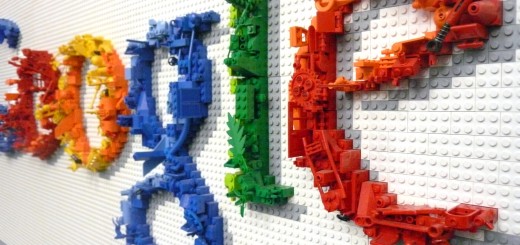In It Together: Publishers & Buyers
We are living in the golden age of digital, where most people are spending a good portion of their lives being plugged into more than one device. This demand for 24/7 connectivity has seen the online advertising landscape evolve rapidly – a record €30.7 billion was spent globally on internet and digital marketing last year according to the Internet Advertising Bureau (IAB) and PWC.
However, with this increase in digital advertising opportunities comes an increased risk of people trying to take advantage of this growth through fraudulent means. It is estimated that half of all worldwide desktop traffic is considered suspicious1. In fact, ad fraud was believed to have cost marketers as much as $11bn in 20142. This has led to advertisers increasingly looking for assurance that their campaign budgets are spent effectively. Most importantly, they are looking for assurance from publishers that their ads are reaching human, non-fraudulent traffic and are seen by the right, targeted audience.
To combat these fraudulent activities both advertisers and publishers are increasingly turning to adapting a portfolio of solutions from varying providers, which although helping to solve the problem, leads to a more complex IT infrastructure.
In this article, Bill Swanson Country Manager UK at PubMatic looks at what cyber threats the digital advertising industry is facing and how the entire online media ecosystem needs to counteract these by working together towards a holistic solution. By achieving this, buyers will not only increase their campaign performances, but will be offered complete transparency of ad impressions, ensuring campaign goals are reached and instilling buyer confidence in the publishers they work with.
Industry pain points
Fraud and viewability remain ardent concerns for buyers in the digital media and advertising industry. According to a survey conducted by Integral Ad Science, 69% of buyers state that media quality is a top priority in their organisation. 3
So what challenges are buyers finding themselves up against?
Brand safety: Reaching non-fraudulent human impression targets is not enough. Premium ads represent premium assets to buyers. In the same way that publishers want to ensure ads that are placed on their website fall within their brand guidelines, buyers also want to ensure that their ads are placed on websites that contain content aligned to their brand.
Fraud prevention: In today’s tech-savvy society, ad impressions can be generated by non-human traffic such as bot traffic or ad stacking – where a buyer believes he is placing his ad on a single ad placement, but in fact this placement has been stacked with multiple ads. Buyers need to be wary of fraudulent, misleading ad impression opportunities as it will result in misuse of budget and decrease the effectiveness of their communications strategy. Another key concern among buyers is viewability, as a campaign is only effective if it has been seen, and seen by the right audience.
Complex IT Infrastructure: As buyers are trying to ensure brand safety and prevent fraud, they are increasingly turning to the implementation of several different solutions from a variety of providers. Although these various solutions may be effective in solving individual needs, ensuring that they are working properly together and managing all of these solutions is creating a complex IT infrastructure with inefficient workflows.
Without the correct tools in place, a buyer’s advertisement cannot be guaranteed to reach its target audience, resulting in wasteful allocation of campaign funds.
The Solution?
Buyers who cannot be assured that they are bidding on non-fraudulent traffic or reaching their target audience are less likely to bid at the highest rate.
The solution? The industry needs to work together to create the safest bidding environment for buyers. Achieve this, and the buyer is likely to bid more, resulting in the publisher achieving the true value of their inventory.
The challenge is to find the balance between addressing these challenges, whilst not being so restrictive that the buyer cannot discover enough inventory to meet his/her campaign goals. To feel confident in where they are focusing funds, buyers need to be in control, using tools that allow them to bid with confidence that they will reach their communication strategy goals.
But not all buyers are the same about the level of risk they are prepared to accept in order to feel confident about the inventory they are buying differs. A buyer knows that the more cautious they are the more ad impression opportunities they will filter and the higher the risk of not having enough to meet their campaign goals. By implementing a customised risk threshold, buyers can have more control as to the level of filtering whilst still having the confidence to bid at the highest level on the right amount of inventory.
Publishers can also help solve these challenges by highlighting their most viewable ad impressions to buyers. Since viewable ads help buyers achieve their campaign goals, they’re frequently willing to offer a higher bid for viewable inventory.
In this together
As the digital economy continues evolve, to remain relevant advertisers will be adapting their communications campaigns and publishers, their content strategies. This means more opportunities in the digital advertising space but also a higher risk of being affected by fraudulent acts.
Communication between media buyers and publishers is fundamental in ensuring advertising strategy goals are reached, resulting in buyers confidently spending budget with trusted publishers. While technology can support in solving the issues faced by the digital marketing industry, it is vital for both parties to work together and implement a holistic solution which will create safer bidding environments.
1http://www.emarketer.com/Article/Desktop-Traffic-Seems-Suspicious-Probably/1011856
2 https://www.exchangewire.com/blog/2014/05/29/the-truth-about-online-ad-fraud/
3 http://integralads.com/news/pubmatic-empowers-buyers-to-buy-with-confidence/
The post In It Together: Publishers & Buyers appeared first on ExchangeWire.com.



